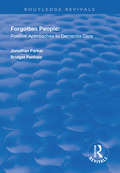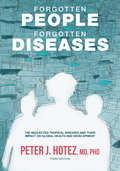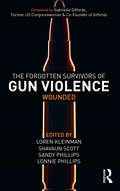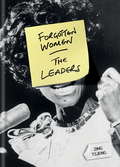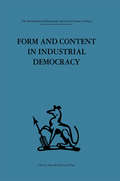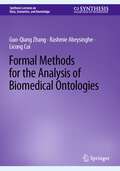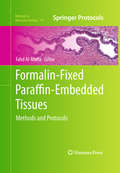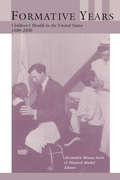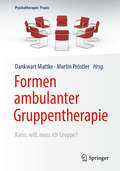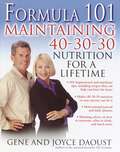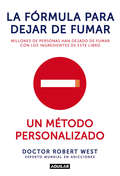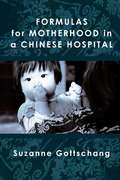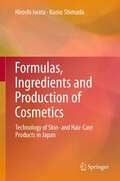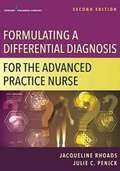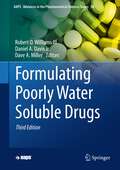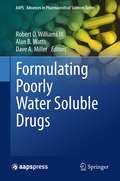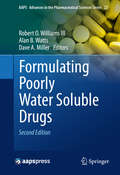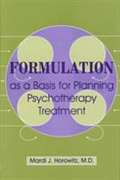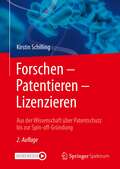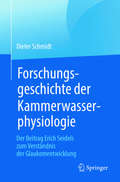- Table View
- List View
The Forgotten Letters of Esther Durrant: The new gripping and heartbreaking historical novel from the bestselling author of The Botanist's Daughter
by Kayte Nunn'I loved this exquisitely written novel and drank in every word. The Forgotten Letters of Esther Durrant is a reminder of the redemptive nature of love, and that it can be found in the most unexpected places.' Fiona Valpy, bestselling author of The Dressmaker's Gift and The Beekeeper's PromiseAn abandoned woman...1951. Esther Durrant, a young mother, is committed to an asylum by her husband. Run by a pioneering psychiatrist, the hospital is at first Esther's prison - but can captivity lead to freedom?A forbidden love...2018. When free-spirited marine scientist Rachel Parker is forced to take shelter on an isolated island off the Cornish Coast during a research posting, she discovers a collection of hidden love letters. Captivated by their passion and tenderness, Rachel is determined to find the intended recipient. A dangerous secret...Meanwhile, in London, Eve is helping her grandmother write her memoirs. When she is contacted by Rachel, it sets in motion a chain of events that threatens to reveal secrets kept buried for more than sixty years. Three women bound together by a heartbreaking secret. A love story that needs to be told.This beautifully haunting and atmospheric novel, will sweep fans of Kate Morton, Elizabeth Gilbert and Emily Gunnis away this summer.'If you enjoyed "City of Girls," by Elizabeth Gilbert, read "The Forgotten Letters of Esther Durrant," by Kayte Nunn' Washington PostNetGalley reviewers are falling in love with The Forgotten Letters of Esther Durrant:'Loved, loved this book. The multi layers wove an intriguing tale, and this was a well researched engaging and heart rending story.''Beautifully written''An absorbing tale set mainly in the Channel Islands. I wanted to know what the resolution would be, so stayed up to read to the end!'Praise for Katye Nunn's The Botanist's Daughter:'A sweeping and exotic read. I was completely swept away. Perfect for readers of Kate Morton.' Lorna Cook, bestselling author of 'The Forgotten Village''The whole book is a delight... Perfect reading whilst sipping a g & t in a beautiful garden somewhere in the sun!' Rosanna Ley, bestselling author of 'The Lemon Tree Hotel''I loved this book and really look forward to reading the next book by Kayte Nunn; perfect for reading in the garden with a glass of something cold.' Bookliterat'Fast-moving and full of surprises...while delivering a poignant and heart-warming story of romance and new beginnings ' Kate Forsyth'The Botanist's Daughter is a quick paced but mysterious read, which transports you across time and place and is filled with an abundance of flowers.' Foreword Books'The Botanist's Daughter is an intriguing story about the strength of women who, for their own reasons, are willing to travel halfway across the world and end up with the same goal. It's also a family mystery that slowly reveals its secrets, just like a blooming flower.' The Bookish Gurl 5/5 stars
Forgotten People: Positive Approaches to Dementia Care (Routledge Revivals)
by Jonathan Parker Bridget PenhaleFirst puiblished in 1998, this book provides a professional and practical guide detailing social work interventions for people with dementia and their carers. It uses case studies from practice situations to exemplify the usefulness and potential pitfalls of a range of interventive strategies. The book includes interactive learning in the form of activities and reflections that can be undertaken individually or in small groups. Thus, it will serve a directly educative, as well as an informative function.
Forgotten People, Forgotten Diseases: The Neglected Tropical Diseases and Their Impact on Global Health and Development (ASM Books)
by Peter J. HotezThe neglected tropical diseases (NTDs) are among the most common infections of the world’s poorest people and have profound ramifications on affected populations, including physical, mental, social, and economic. This third edition of Forgotten People, Forgotten Diseases coincides with the third decade of the NTDs movement, which has given access to essential NTD preventative treatments and medications to more than 1 billion people. Professor Peter Hotez, MD, PhD, one of the founders of the NTD movement, discusses how the NTD space evolved and control was implemented against these ancient scourges, through alliances between nongovernmental development organizations and private-public partnerships. Forgotten People, Forgotten Diseases also Reports on the health and economic effects of the NTDs, and the challenges of measuring diseases that do not always kill, but adversely affect productivity, child development, pregnancy outcome, and economic development. Lays a roadmap for continued control of existing and newly identified NTDs and spotlights potential opportunities for reducing global poverty and “repairing the world.” Describes a global initiative to provide annual mass drug administration for more than one billion people affected by NTDs. Highlights the role of innovation and product development partnerships for new treatments and vaccines. Explains how science and vaccine diplomacy ensure that a new generation of biotechnologies reaches the world’s poorest people. Forgotten People, Forgotten Diseases remains an essential resource for anyone seeking insight into global advocacy coordination and mobilization of resources to combat NTDs and continues to tell the story of the world’s people who live in extreme poverty and what it means for them to live with these devastating diseases. “Like Dr. Hotez, I have struggled with how to best get the word out about our need to address NTDs and their link to poverty. Now he has provided us all with a remarkable tool, a book for people without an extensive scientific or medical background. Forgotten People, Forgotten Diseases is an excellent ‘one-stop’ primer about NTDs.”—Soledad O’Brien, Host, Matter of Fact with Soledad O’Brien
The Forgotten Survivors of Gun Violence: Wounded
by Loren Kleinman Shavaun Scott Sandy Phillips Lonnie PhillipsThe toll of America’s gun violence epidemic is usually measured in lives lost—more than 35,000 each year. Ignored, almost completely, are the many more people who are shot every year, and survive. —Shot and Forgotten, The Trace “Nearly 40,000 people die from gun violence in the US every year. This uniquely American crisis leaves no community untouched—but it doesn’t have to be this way.” —Gabrielle Giffords The Forgotten Survivors of Gun Violence collects 20 personal essays of survivors’ visible and invisible wounds from school shootings, attempted suicide by firearm, mass shootings, gang violence, and domestic violence. Their stories remind us that these traumatic experiences are not exclusive to combat soldiers but, more notably, suffered by ordinary people during modern life. With this collection, editors Loren Kleinman, Shavaun Scott, Sandy Phillips and Lonnie Phillips expose the true lifecycle of a bullet and the trauma left in its wake. Through personal narratives and select personal photos, the wounded tell a story that’s forgotten when the cameras go away. This collection will be of interest to first responders, officers, therapists, medical practitioners, and educators.
Forgotten Women: The Leaders (Forgotten Women Ser.)
by Zing Tsjeng'To say this series is "empowering" doesn't do it justice. Buy a copy for your daughters, sisters, mums, aunts and nieces - just make sure you buy a copy for your sons, brothers, dads, uncles and nephews, too.' - indy100The women who shaped and were erased from our history.The Forgotten Women series will uncover the lost histories of the influential women who have refused over hundreds of years to accept the hand they've been dealt and, as a result, have formed, shaped and changed the course of our futures. The Leaders weaves together 48* unforgettable portraits of the true pioneers and leaders who made huge yet unacknowledged contributions to history, including:Grace O'Malley, the 16th century Irish pirate queenSylvia Rivera, who spearheaded the modern transgender rights movementAgent 355, the unknown rebel spy who played a pivotal role in the American RevolutionNoor Inayat Khan, who went undercover to spy for the French Resistance and became Nazi enemy no. 1Amina of Zazzau, the formidable ancient Muslim warrior queen of Northern NigeriaChapters including Rebels; Warriors; Rulers; Activists and Reformers shine a spotlight on the rebellious women who defied the odds, and the opposition, to change the world around them. *The number of Nobel-prize-winning women.
Forgotten Women: The Leaders (Forgotten Women)
by Zing TsjengSelected for the Evening Standard present gift guide of the year'To say this series is "empowering" doesn't do it justice. Buy a copy for your daughters, sisters, mums, aunts and nieces - just make sure you buy a copy for your sons, brothers, dads, uncles and nephews, too.' - indy100'Here's to no more forgotten women.' Evening StandardThe women who shaped and were erased from our history.The Forgotten Women series will uncover the lost histories of the influential women who have refused over hundreds of years to accept the hand they've been dealt and, as a result, have formed, shaped and changed the course of our futures. The Leaders weaves together 48* unforgettable portraits of the true pioneers and leaders who made huge yet unacknowledged contributions to history, including:Grace O'Malley, the 16th century Irish pirate queenSylvia Rivera, who spearheaded the modern transgender rights movementAgent 355, the unknown rebel spy who played a pivotal role in the American RevolutionNoor Inayat Khan, who went undercover to spy for the French Resistance and became Nazi enemy no. 1Amina of Zazzau, the formidable ancient Muslim warrior queen of Northern NigeriaChapters including Rebels; Warriors; Rulers; Activists and Reformers shine a spotlight on the rebellious women who defied the odds, and the opposition, to change the world around them. *The number of Nobel-prize-winning women.
Form and Content in Industrial Democracy: Some experiences from Norway and other European countries (International Behavioural And Social Sciences Ser. #Vol. 46)
by F E Emery Einar Thorsrud Eric TristTavistock Press was established as a co-operative venture between the Tavistock Institute and Routledge & Kegan Paul (RKP) in the 1950s to produce a series of major contributions across the social sciences. This volume is part of a 2001 reissue of a selection of those important works which have since gone out of print, or are difficult to locate. Published by Routledge, 112 volumes in total are being brought together under the name The International Behavioural and Social Sciences Library: Classics from the Tavistock Press. Reproduced here in facsimile, this volume was originally published in 1969 and is available individually. The collection is also available in a number of themed mini-sets of between 5 and 13 volumes, or as a complete collection.
Formal Methods for the Analysis of Biomedical Ontologies (Synthesis Lectures on Data, Semantics, and Knowledge)
by Guo-Qiang Zhang Rashmie Abeysinghe Licong CuiThe book synthesizes research on the analysis of biomedical ontologies using formal concept analysis, including through auditing, curation, and enhancement. As the evolution of biomedical ontologies almost inevitably involves manual work, formal methods are a particularly useful tool for ontological engineering and practice, particularly in uncovering unexpected "bugs" and content materials. The book first introduces simple but formalized strategies for discovering undesired and incoherent patterns in ontologies before exploring the application of formal concept analysis for semantic completeness. The book then turns to formal concept analysis, a classical approach used in the mathematical treatment of orders and lattices, as an ontological engineering principle, focusing on the structural property of ontologies with respect to its conformation to lattice or not (non-lattice). The book helpfully covers the development of more efficient algorithms for non-lattice detection and extraction required by exhaustive lattice/non-lattice analysis. The book goes on to highlight the power and utility of uncovering non-lattice structure for debugging ontologies and describes methods that leverage the linguistic information in concept names (labels) for ontological analysis. It also addresses visualization and performance evaluation issues before closing with an overview and forward-looking perspectives on the field. This book is intended for graduate students and researchers interested in biomedical ontologies and their applications. It can be a useful supplement for courses on knowledge representation and engineering and also provide readers with a reference for related scientific publications and literature to assist in identifying potential research topics. All mathematical concepts and notations used in this book can be found in standard discrete mathematics textbooks, and the appendix at the end of the book provides a list of key ontological resources, as well as annotated non-lattice and lattice examples that were discovered using the authors' methods, demonstrating how "bugs are fixed" by converting non-lattices to lattices with minimal edit changes.
Formalin-Fixed Paraffin-Embedded Tissues
by Fahd Al-MullaPresenting an area of research that intersects with and integrates diverse disciplines, including genomics, epigenetics, proteomics, and cellular biology, among others, Formalin-Fixed Paraffin-Embedded Tissues: Methods and Protocols collects contributions from expert researchers in order to provide practical guidelines to this complex study. Compiled in order to provide researchers with up-to-date methodological information pertaining to the utilization of genomic, transcriptomic, and proteomic data in diagnosis, prognosis, and tailored therapy, the ultimate aim of this volume is to decipher diseases at a molecular level. Divided into multiple convenient chapters, this detailed book covers various techniques to construct and utilize tissue arrays, it also provides detailed protocols in immunohistochemistry, immunofluorescence, fluorescent and chromogenic in situ hybridization, and ultimately introduces protocols for FFPET microdissection and nucleic acids extraction for their utilization in advanced techniques such as microarray CGH, DNA methylation and pyrosequencing. The volume also discusses FFPET research from an ethical standpoint and concludes with a chapter on novel tissue fixative. Written in the highly successful Methods in Molecular BiologyTM series format, chapters contain introductions to their respective topics, lists of the necessary materials and reagents, step-by-step, readily reproducible laboratory protocols, and notes on troubleshooting and avoiding known pitfalls. Authoritative and accessible, Formalin-Fixed Paraffin-Embedded Tissues: Methods and Protocols serves as a practical guide for scientists of all backgrounds and aims to convey the appropriate sense of fascination associated with this vital field of research.
Formation and Control of Biofilm in Various Environments
by Hideyuki Kanematsu Dana M. BarryThis book provides excellent techniques for detecting and evaluating biofilms: sticky films on materials that are formed by bacterial activity and produce a range of industrial and medical problems such as corrosion, sanitary problems, and infections. Accordingly, it is essential to control biofilms and to establish appropriate countermeasures, from both industrial and medical viewpoints. This book offers valuable, detailed information on these countermeasures. It also discusses the fundamentals of biofilms, relates various substrates to biofilms, and presents a variety of biofilm reactors. However, the most important feature of this book (unlike others on the market) is its clear focus on addressing the practical aspects from an engineering viewpoint. Therefore, it offers an excellent practical guide for engineers and researchers in various fields, and can also be used as a great academic textbook.
The Formation of the Swiss Hospital System (1840–1960): An Analysis of Surgeon-Modernisers in the Canton of Vaud
by Pierre-Yves DonzéThis book offers an analysis of the formation of contemporary hospital systems between the mid-19th century and the mid-20th century. Based on extensive archival material and a broad international literature review, it focuses on the case of the canton of Vaud, Switzerland, and uses a triple approach that discusses technological innovations, hospital management, and health policy. This research is a major contribution to the history of medicine which gives a unique overview of the formation of contemporary hospital systems.
Formative Years: Children's Health in the United States, 1880-2000
by Alexandra Minna Stern Howard MarkelAlexandra Minna Stern is Associate Director of the Center for the History of Medicine and Assistant Professor of Obstetrics and Gynecology and American Culture at the University of Michigan. Howard Markel is the George Edward Wantz Professor of the History of Medicine, Professor of Pediatrics and Communicable Diseases, and Professor of History at the University of Michigan, and Director of the Center for the History of Medicine.
Formen ambulanter Gruppentherapie: Kann, will, muss ich Gruppe? (Psychotherapie: Praxis)
by Dankwart Mattke Martin PröstlerDieses Buch ist ein Plädoyer für Gruppenangebote in der ambulanten psychotherapeutischen Praxis. Es versammelt Grundlagen, Erfahrungen und Praxistipps für Gruppen in verschiedenen Settings, Patientengruppen und Therapieschulen und leistet einen Beitrag zur Debatte um die patientenorientierte Versorgung. Psychologische und ärztliche Psychotherapeuten sowie Psychiater erfahren, wie sie Gruppenpsychotherapie nach den Richtlinienverfahren für ihre ambulante Praxis neu entdecken, gestalten und ausbauen können. Gruppenpsychotherapien erlauben eine lebendige, bereichernde und ökonomische Anwendung von Psychotherapie bei einer Vielzahl von Problemfeldern und Störungen und sind im Hinblick auf ihre Wirksamkeit sehr gut abgesichert. Aus dem Inhalt: Psychodynamische Psychotherapie in Gruppen – Verhaltenstherapie in Gruppen – Kinder- und Jugendlichenpsychotherapie in Gruppen – Kombination von Einzel- und Gruppenpsychotherapie – Gruppenpsychotherapie in der ambulanten Rehabilitation – Praxisorganisation und Abrechnung – Stand der Forschung. Die Herausgeber: Dr. med. Dankwart Mattke ist in fachärztlicher Praxis tätig: psychosomatische Medizin, Psychiatrie, Neurologie, Psychotherapie, Psychoanalyse; zudem in eigener Beratungssozietät: Supervision, Coaching, Training, Organisations- und Teamentwicklung. Dipl.-Psych., Dipl.-Theol. Martin Pröstler ist Psychoanalytiker und Gruppenlehranalytiker, niedergelassen als Psychotherapeut, Supervisor und Organisationsberater in eigener Praxis.
Formula 101: Maintaining 40-30-30 Nutrition for a Lifetime
by Gene Daoust Joyce DaoustThe must-have companion to the national bestseller The Formula. What is the 40-30-30 formula? It's the exact combination of carbohydrates, proteins, and fats you need to eat at every meal to stimulate the production of glucagon--the body's natural fat-burning hormone. If you're eating breakfast, lunch, and dinner on the 40-30-30 formula, your fat is melting away and your energy and concentration are at peak performance. Now with Formula 101, Gene and Joyce Daoust have written a fun, fact-filled companion to the original book that is essential to help you keep right on track in your fight against the pounds. Simple and straightforward, this book gives you: * 101 simple nutrition tips and secrets guaranteed to help you burn fat faster and stay with The Formula for life, including delicious recipes * The Formula Nutrition Journal--a self-motivational personal nutrition journal and daily planner to help you continue to eat right * Helpful suggestions for eating out on The Formula--from fast food to haute cuisine, even dessert--you can still enjoy restaurants on the 40-30-30 plan. Formula 101 is the ultimate guide for anyone who wants to continue to lose weight, feel great, and perform better. In your hands are all the tools you need to master the 40-30-30 way of eating--starting today!
La fórmula para dejar de fumar: Un metodo personalizado
by Robert WestDescubre cómo puedes dejar de fumar a tu ritmo.Millones de personas han dejado de fumar con los ingredientes de este libro.¿Has intentado dejar de fumar con anterioridad? Si al final volviste a encender otro cigarrillo habrás pensado que fracasaste, pero es justamente lo contrario: vas por el buen camino. A diferencia de lo que solemos pensar, normalmente los fumadores recaen varias veces antes de dejar de fumar definitivamente.Este libro no es una receta mágica. La fórmula para dejar de fumar no pretende hacerte creer que hay un único camino para olvidarse del tabaco, ya que cualquier fumador sabe que a la hora de dejarlo influyen distintos factores dependiendo de la persona y del momento en el que se haga. Este libro te mostrará todos los materiales que tenemos a nuestro alcance para que puedas encontrar TU método, el mejor método personalizado para dejar de fumar.El doctor Robert West lleva investigando instrumentos, terapias y medicamentos para dejar de fumar desde hace más de treinta años y ahora nos guía a través del laberinto de todas las opciones disponibles para así revelarnos cuáles son las más eficaces y cómo se pueden combinar estos «ingredientes» para que el propio fumador establezca la receta que mejor se ajuste a su caso.Este libro da respuesta a preguntas tan comunes como:¿Debería reducir gradualmente el consumo de cigarrillos o dejarlo de golpe? ¿Debería usar parches de nicotina?¿Son los cigarrillos electrónicos efi caces?¿Cuál es la mejor manera de combatir el deseo de fumar?¿Cómo puedo evitar el aumento de peso cuando deje de fumar?
Formulas for Motherhood in a Chinese Hospital
by Suzanne GottschangWhat happens to pregnant women when the largest country in the world implements a global health policy aimed at reorganizing hospitals and re- training health care workers to promote breastfeeding? Since 1992, the Chinese government has led the world in reorganizing more than 7,000 hospitals into “Baby- Friendly” hospitals. The initiative’s goal, overseen by UNICEF and the World Health Organization, is to promote the practice of breastfeeding by reorganizing hospital routines, spaces, and knowledge in maternity wards and obstetrics clinics. At the same time, China’s hospitals in the mid- 1990s operated as sites where the effects of economic reform and capitalism increasingly blurred the boundaries between state imperatives to produce healthy future citizens and the flexibility accorded individuals through their participation in an emerging consumer culture. Formulas for Motherhood follows a group of women over eighteen months as they visited a Beijing Baby- Friendly Hospital over the course of their pregnancies and throughout their postpartum recoveries. The book shows how the space of the hospital operates as a microcosm of the larger social, political, and economic forces that urban Chinese women navigate in the process of becoming a mother. Relations between biomedical practices, heightened expectations of femininity and sexuality demanded by a consumer culture, alongside international and national agendas to promote maternal and child health, reveal new agents of maternal governance emerging at the very moment China’s economy heats up. This ethnography provides insight into how women’s creative pragmatism in a rapidly changing society leads to their views and decisions about motherhood.
Formulas, Ingredients and Production of Cosmetics
by Hiroshi Iwata Kunio ShimadaToday, young cosmetics researchers who have completed their graduate studies and have entered a cosmetics company are put through several years of training before they become qualified to design cosmetics formulations themselves. They are trained so that they can design formulas not by a process of logic but by heart, like craftsmen, chefs, or carpenters. This kind of training seems a terrible waste of labor and time. To address this issue and allow young scientists to design novel cosmetics formulations, effectively bringing greater diversity of innovation to the industry, this book provides a key set of skills and the knowledge necessary for such pursuits. The volume provides the comprehensive knowledge and instruction necessary for researchers to design and create cosmetics products. The book's chapters cover a comprehensive list of topics, which include, among others, the basics of cosmetics, such as the raw materials of cosmetics and their application; practical techniques and technologies for designing and manufacturing cosmetics, as well as theoretical knowledge; emulsification; sensory evaluations of cosmetic ingredients; and how to create products such as soap-based cleansers, shampoos, conditioners, creams, and others. The potential for innovation is great in Japan's cosmetics industry. This book expresses the hope that the high level of dedicated research continues and proliferates, especially among those who are innovators at heart.
Formulating a Differential Diagnosis: For the Advanced Practice Provider
by Jacqueline Rhoads Julie C. PenickThis easy-access clinical guide to over 70 commonly seen symptoms, written for advanced practice provider (APP) students and new practitioners, describes a step-by-step process for obtaining a reliable patient history, choosing the appropriate physical exam, and using the patient history and physical exam findings to form a differential diagnosis. <p><p>The second edition continues to include the case study approach, and is updated to incorporate 22 new symptoms along with contributions by a new editor, who is a leader in holistic health. <p><p> The guide is distinguished by several unique features including focused patient history questions and responses, physical exam findings, a differential diagnosis table (clearly comparing potential diagnostic choices based on symptoms), a diagnostic examination table (including estimated costs and codes), and a case study summary highlighting the critical thinking process. Symptoms are presented alphabetically in a systematic, unfolding case study approach and include chief complaint, presenting history, past history, and explicit methodology for determining correct diagnosis.
Formulating Poorly Water Soluble Drugs (AAPS Advances in the Pharmaceutical Sciences Series #50)
by Robert O. Williams III Daniel A. Davis Jr. Dave A. MillerThe objective of this third edition is to consolidate within a single text the most current knowledge, practical methods, and regulatory considerations pertaining to formulations development with poorly water-soluble molecules. A pharmaceutical scientist’s approach toward solubility enhancement of a poorly water-soluble molecule typically includes detailed characterization of the compound’s physiochemical properties, solid-state modifications, advanced formulation design, non-conventional process technologies, advanced analytical characterization, and specialized product performance analysis techniques. The scientist must also be aware of the unique regulatory considerations pertaining to the non-conventional approaches often utilized for poorly water-soluble drugs. One faced with the challenge of developing a drug product from a poorly soluble compound must possess at a minimum a working knowledge of each of the above mentioned facets and detailed knowledge of most. In light of the magnitude of the growing solubility problem to drug development, this is a significant burden especially when considering that knowledge in most of these areas is relatively new and continues to develop.
Formulating Poorly Water Soluble Drugs
by Robert O. Williams III Alan B. Watts Dave A. MillerThis volume is intended to provide the reader with a breadth of understanding regarding the many challenges faced with the formulation of poorly water-soluble drugs as well as in-depth knowledge in the critical areas of development with these compounds. Further, this book is designed to provide practical guidance for overcoming formulation challenges toward the end goal of improving drug therapies with poorly water-soluble drugs. Enhancing solubility via formulation intervention is a unique opportunity in which formulation scientists can enable drug therapies by creating viable medicines from seemingly undeliverable molecules. With the ever increasing number of poorly water-soluble compounds entering development, the role of the formulation scientist is growing in importance. Also, knowledge of the advanced analytical, formulation, and process technologies as well as specific regulatory considerations related to the formulation of these compounds is increasing in value. Ideally, this book will serve as a useful tool in the education of current and future generations of scientists, and in this context contribute toward providing patients with new and better medicines.
Formulating Poorly Water Soluble Drugs
by Robert O. Williams Alan B. Watts Dave A. MillerThe objective of this volume is to consolidate within a single text the most current knowledge, practical methods, and regulatory considerations pertaining to formulations development with poorly water-soluble molecules. A pharmaceutical scientist's approach toward solubility enhancement of a poorly water-soluble molecule typically includes detailed characterization of the compound's physiochemical properties, solid-state modifications, advanced formulation design, non-conventional process technologies, advanced analytical characterization, and specialized product performance analysis techniques. The scientist must also be aware of the unique regulatory considerations pertaining to the non-conventional approaches often utilized for poorly water-soluble drugs. One faced with the challenge of developing a drug product from a poorly soluble compound must possess at minimum a working knowledge of each of the abovementioned facets and detailed knowledge of most. In light of the magnitude of the growing solubility problem to drug development, this is a significant burden especially when considering that knowledge in most of these areas is relatively new and continues to develop
Formulation As A Basis For Planning Psychotherapy Treatment
by Mardi J. HorowitzTo help their patients, clinicians must make accurate diagnoses and devise effective treatment plans. These plans often involve psychotherapy with goals that include symptom reduction, the prevention of relapse, and helping patients recognize and remove impediments to more effective functioning. Formulation as a Basis for Planning Psychotherapy Treatment presents a formulation system that combines concepts derived from psychodynamic, interpersonal, cognitive-behavioral, and family system approaches. In a step-by-step manner, illustrated by plentiful case examples, this useful guide shows psychiatrists, residents in psychiatry and psychology, social workers, and marriage and family counselors how to plan treatment after the initial diagnosis. After an overview of psychological change processes, each of the five steps in the formulation process are covered systematically. Case formulation is begun by the careful selection and description of a patient's symptoms and problems. This information is then grouped into states of mind, an approach that allows for multiple presentations of a patient, avoids static descriptions of observations, and places many observable features into meaningful clusters of co-occurrence. Subsequent chapters explain how all of this information can be used to focus the treatment and identify defensive controls that may interfere with treatment. The author describes how to infer deep beliefs about the self in terms of views of relationships with others. The book teaches how to formulate plans for interventions during psychotherapy.
Forschen – Patentieren – Lizenzieren: Aus der Wissenschaft über Patentschutz bis zur Spin-off-Gründung
by Kirstin SchillingDieser Ratgeber erklärt, wie Forschungsergebnisse aus Universitäten und Hochschulen patentiert und lizenziert oder verkauft werden können. Wichtige Aspekte des Erfindungs-, Patent- und Lizenzrechts werden anhand von Beispielen erläutert.Im ersten Teil werden Fragen beantwortet, was eine patentierbare Erfindung ist und welche Erfindervergütung Forschenden an Hochschulen zusteht. Ausführlich behandelt wird u.a. das Thema, wie Forschungsergebnisse publiziert und trotzdem patentiert werden können.Im zweiten Teil, speziell zum Patentieren, wird gezeigt, wie eine Patentanmeldung aufgebaut ist, wie Patentprüfverfahren ablaufen und was sie kosten. Mit vielen Praxistipps wird erklärt, wie man eine Patentrecherche durchführt und ermittelt, ob ein Patent noch aktiv ist. Zudem wird erläutert, welche Besonderheiten beim Schutz von Erfindungen für medizinische Anwendungen zu beachten sind.Im dritten Teil werden verschiedene vertragliche Lösungen zur Anbahnung sowie zum Abschluss von Lizenz- und anderen Verwertungsvereinbarungen vorgestellt. Häufige Probleme bei der Finanzierung der Weiterentwicklung von Projekten werden adressiert und Lösungen aufgezeigt. Der Schlussteil ist speziell dem Thema der Gründung von akademischen Spin-off-Unternehmen gewidmet. Die aktualisierte und erweiterte 2. Auflage enthält neue Beiträge zu den Themen Software-Schutz und -Lizenzierung und zu den Möglichkeiten, patentgeschützte Technologien weiterzuentwickeln. Neue Beispiele sowie verlinkte Interviews mit Experten illustrieren Best-practice-Fälle.Das Buch eignet sich sowohl als Übersicht für Einsteiger als auch zum gelegentlichen Nachschlagen für gestandene Erfinder. Es richtet sich grundsätzlich an alle Forschenden in den Naturwissenschaften und der Medizin sowie Mitarbeitende des Technologietransfers an Universitäten, Universitätskliniken und Hochschulen. Videos per App: einfach die SN More Media App kostenfrei herunterladen, ein Bild oder einen Link mit dem Play-Button scannen und sofort das Video auf Smartphone oder Tablet ausspielen.
Forschungsgeschichte der Kammerwasserphysiologie: Der Beitrag Erich Seidels zum Verständnis der Glaukomentwicklung
by Dieter SchmidtEnde des 19. und zu Beginn des 20. Jahrhunderts gab es sehr unterschiedliche experimentelle Befunde zur Physiologie der Kammerwasserwege. Mit seinen Untersuchungen zeigte Erich Seidel, dass der Ziliarkörper das Sekretionsorgan des Auges ist. Seine bedeutenden zahlreichen und umfangreichen Publikationen, die sich mit Fragen der intraokularen Flüssigkeitsströmung und mit dem Glaukom befassten, erschienen in der Zeit von 1916 bis 1932. Mit seinen neuen Erkenntnissen setzte er sich trotz Widerspruchs mehrerer Augenärzte durch und trug damit entscheidend zum besseren Verständnis der Glaukomentwicklung bei.
Forschungsmethoden in der Gesundheitsförderung und Prävention
by Marlen Niederberger Emily FinneUm als Schnittstelle zwischen Wissenschaft und Praxis geeignete Interventionen zu identifizieren, zu entwickeln, umzusetzen und zu evaluieren, benötigen Gesundheitsförderung und Prävention unter anderem Theorien, eine zuverlässige Evidenzlage, aktuelle empirische Daten, subjektorientierte Ansätze und partizipative Instrumente. In diesem Kontext spielen qualitative und quantitative Forschungsmethoden sowie inter- und transdisziplinäre Sichtweisen eine wichtige Rolle. Dieses Buch gibt einen Überblick über wichtige Forschungsmethoden in der Gesundheitsförderung und Prävention.

